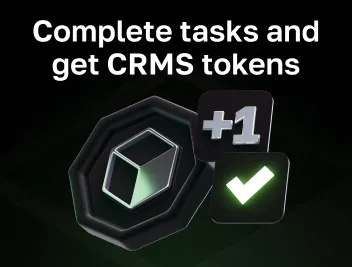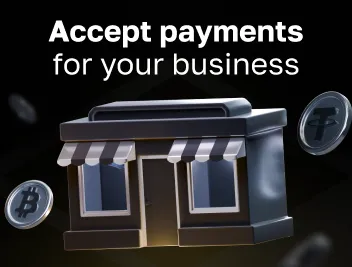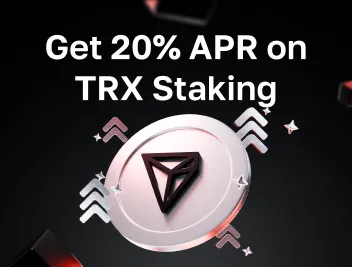
How to Stake Ethereum?
In the world of cryptocurrencies Ethereum occupies a special place due to the staking mechanism. This mechanism is one of the key innovations of Ethereum, which is responsible for the network’s security and stability.
In this article we will talk about the various options for staking Ethereum, analyze the possible profitability and the risks connected with it.
What is Staking Ethereum?
Staking is the process of locking up your coins to get rewards and support the network. It’s a popular way for traders to get additional income, and multifunctional crypto platforms, like Cryptomus, make it easily accessible to everyone. Cryptomus staking option supports a variety of coins like USDT and TRX, and the expected yearly ROI for ETH is 3%. Plus, with Cryptomus wallet, you have the flexibility to choose a validator and tailor your staking returns to fit your objectives.
As we’ve understood, staking Ethereum means putting your ETH coins into the network to support blockchain operations. These processes can be the transaction processing or the new blocks’ creation. In return, participants receive a reward in the form of new ETH. This principle gives currency holders the opportunity to earn passive income.
The value of ETH is maintained by the limited number of coins in circulation and the high interest in the network's capabilities. The main feature of this blockchain network is the ability to develop and launch decentralized applications that use smart contracts. They cannot be disabled and this feature ensures the security of applications.
How Does Ethereum Staking Work?
Ethereum stake works using blockchain technology. Users' computers form network nodes and the ETH protocol supports the smooth work of the Ethereum virtual machine.
The operations are performed by special trusted nodes that store information. They are called validators. They create blocks or check blocks created by other validators, and also validators are rewarded for offering new blocks. In order to carry out any operations on the ETH network, the user must purchase a certain number of "coins". For interactions on the network there is required a commission in the form of a fee called "gas" — a unit for measuring the amount of computing effort.
The Ways of Staking ETH
You can stake Ethereum on different crypto exchange platforms like Cryptomus, Coinbase, Binance, etc. Also there are several ways on how to stake your Ethereum.
Self-staking
This method assumes that you become a full-fledged network validator by contributing at least 32 ETH. Here you have full control over your funds and receive full rewards. However, this method requires technical knowledge and a constant Internet connection.
Staking as a service
If you have the required amount of ETH but do not have the desire or ability to set up your own node, you can stake Ethereum by using the services of outside providers. These services take over the technical side of the process, while you retain control of your keys.
Combined staking
Those who do not have 32 ETH or prefer to share risks can stake using staking pools. You invest a smaller amount in the pool, and your share of the reward is calculated based on your contribution to the pool's total capital. This option offers less risk, but also involves sharing the reward with other pool members.
Staking on exchanges
One more way about how to stake ETH is cryptocurrency exchanges. They allow users to deposit their ETH directly through the platform. This is the easiest way to participate in staking, but it is also connected with some risks. Among them are the potential vulnerability of exchanges to hacker attacks and the possibility of freezing funds because of the exchange's scam.
Factors Influencing ETH Staking Rewards
Ethereum Staking Rewards are encouragements paid to users who participate in the Ethereum network as validators by placing their ETH. The amount of staking reward depends on various factors:
-
The staking method. The way of staking you choose will affect your final income;
-
The total amount of ETH. A question about how much ETH to stake is connected with the condition: the more ETH is staked, the lower the reward per unit of invested ETH;
-
Changes in the Ethereum protocol. Network updates, such as the transition to Ethereum 2.0, can affect the reward structure;
-
Fluctuations in the price of ETH. Since rewards are paid in ETH, their real value in fiat currencies may fluctuate along with the market price of ETH;
-
Network availability and stability. Technical failures or network availability issues may affect the validator's ability to participate in the consensus process, which in turn affects rewards.

You can estimate your income from the validator based on the current stake reward rate and your share in the network. The current interest rate for staking ETH is 2.64%. It means if you stake 1000 ETH, your estimated income will be 26.4 ETH per year. Using this formula you can see how much Ethereum you need to stake.
Steps for the Effective ETH Staking
Everyone who is interested in the potential return on investments can stake Ethereum. Here is a step-by-step guide for staking ETH:
1. Log in to your account. You need to have a personal account on crypto exchange platform;
2. Go to the ‘Personal Wallet’ section. Here you are to choose the “Staking” option. Moreover here you can see the state of your currency account;
3. Select Ethereum (ETH). Find it in the list of cryptocurrencies available for staking and just click on it;
4. Configure parameters. At this step you are to select the amount of ETH you want to stake;
5. Stake and take the rewards. From this moment your assets are potentially growing at a high rate.
When you complete the staking process, take the time to understand the conditions. For example, staking with Cryptomus is designed to make the process simple, so that is the best place to stake Ethereum for beginners. Anyway knowledge is your best ally. As soon as you stake your digital coins, they work continuously, aiming for a 90% per annum.
Benefits of Ethereum Staking
Staking platforms are becoming an important blockchain security mechanism. In this section we summarize all the advantages of staking for users, validators, and the development of Ethereum in general:
-
Additional earning opportunities. Using Ethereum coins, a staker can earn additional income by locking them in the wallet. At the same time, the underlying asset will consistently generate income in the form of % from the staked money;
-
Improved security. The network becomes more secure from attacks: the more ETH is supplied, the more ETH is required to manage the network. To pose a threat, scammers need to keep most of the validators. That means they will need to manage most of the ETH in the system, which is almost impossible;
-
Eco-friendly service. Shareholders don’t need to perform energy-intensive calculations to participate in the network’s protection. Staking nodes can run on modest hardware consuming very little energy.
Risks of Ethereum Staking
Staking Ethereum offers a unique opportunity to generate passive income, but it also comes with certain risks:
-
Network risks. Network failures, software errors or disruptions to validators can lead to temporary loss of revenue or even fines;
-
Liquidity. Funds invested in staking become unavailable for withdrawal or trading until a certain point, which can be a risk in conditions of market volatility;
-
Price risks. Like any cryptocurrency, Ethereum is subject to market fluctuations, and that can increase or decrease the actual value of the rewards received.
Staking Ethereum can be an attractive opportunity for long-term investors willing to take appropriate risks. At the same time, a more cautious approach may be required for those who are looking for where to stake Ethereum in shorter-term or less risky investments. Staking ETH is worth it because the demand for its blockchain to launch decentralized applications remains high. Before investing you should totally know what Ethereum staking is and how it works.
Rate the article








comments
0
You must be logged in to post a comment